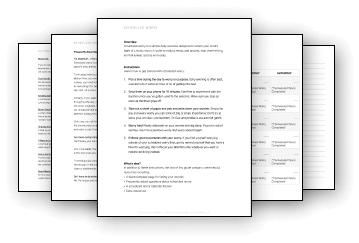SCHEDULED WORRY
Stop Overthinking in 10 Minutes per Day
- Reduce stress and anxiety
- End chronic worry and rumination
- Fall asleep quickly and easily
Download the Free Guide

This 8-page PDF guide includes:
- Step-by-Step Instructions
- Helpful Tips & Reminders
- Frequently Asked Questions
You’ll also be subscribed to my free weekly newsletter. Unsubscribe anytime.





4 Comments
Add YoursI have never read an article as interesting as this one.
The most detailed article I’ve ever read
I love this! I will try it soon!
hi